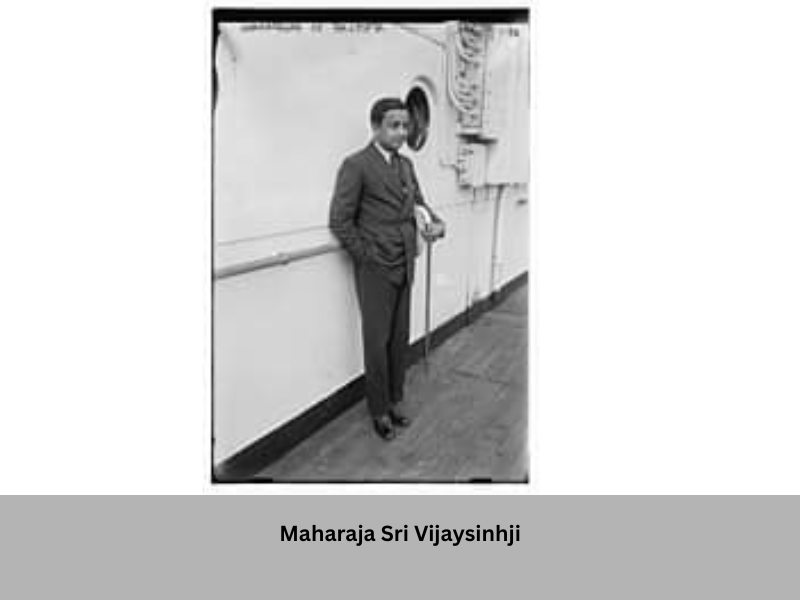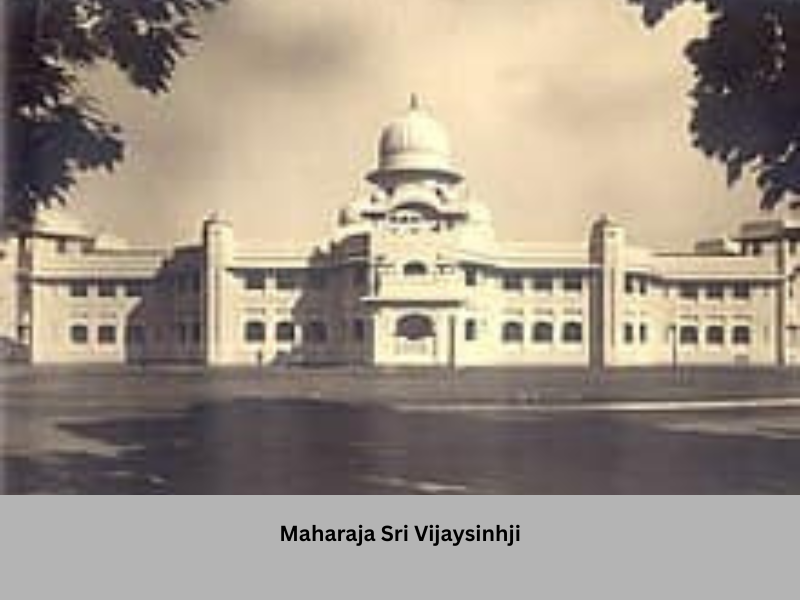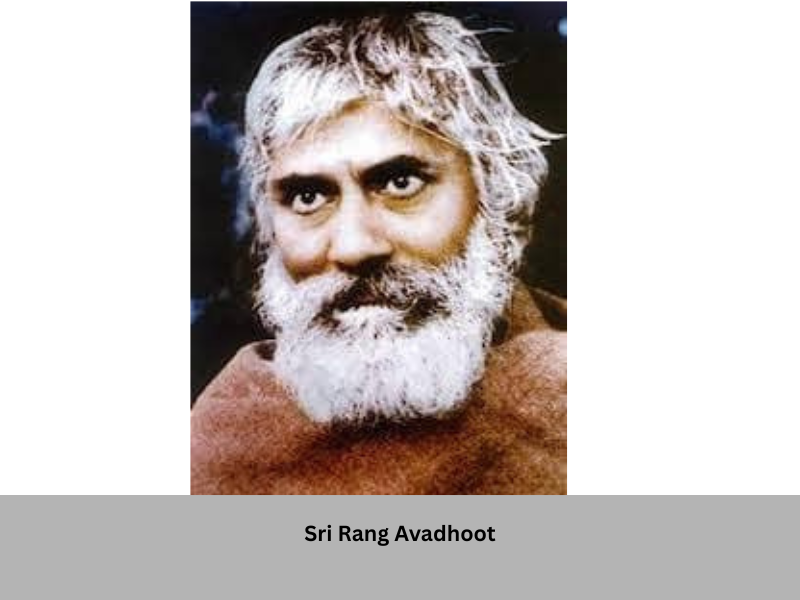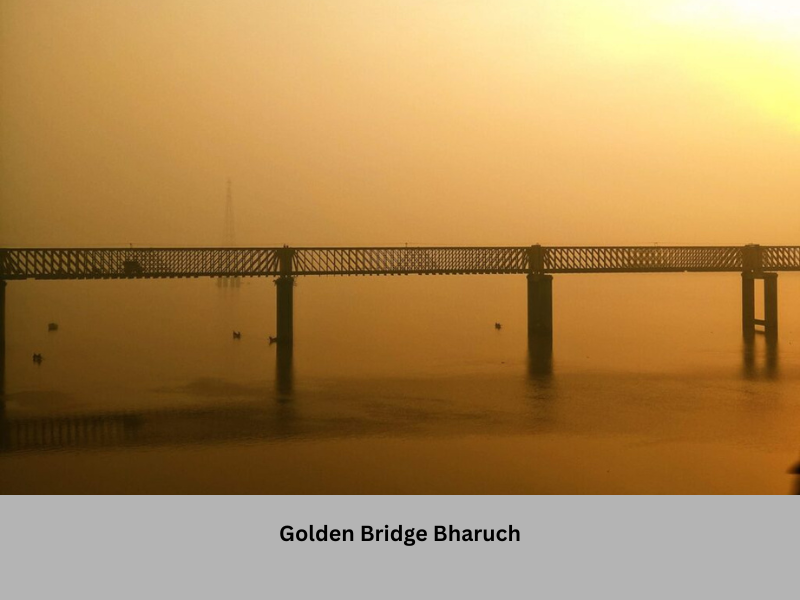The first three districts in Gujarat through which Narmada flows are Chhota Udaipur, Vadodara and Narmada (having its headquarters at Rajpipla.) Most part of Vadodara is on the northern banks while Rajpipla is mostly on the southern. Both Vadodara (Baroda) and Rajpipla were also important princely states prior to independence. The Rajpipla state ruled by the Gohil Rajput dynasty for nearly six centuries had a much longer history than its admittedly more powerful northern neighbour – and often a challenger – the Maratha state of Baroda ruled by the Gaekwars. While the history and achievements of the Baroda state, particularly during the reign of its later progressive rulers like Sayajirao Gaekwad has been much written about, the story of the Rajpipla state is not that widely known and deserves to be known.
Rajpipla State and the remarkable Maharaja Vijaysinhji

The Rajpipla state had its seat of power at the town of Rajpipla on the banks of river Karjan, a tributary of Narmada. They had as their Kuldevi, Mata Harsiddhi Devi of Ujjain, and a temple dedicated to the Devi is also located in Rajpipla town. Founded in 1340, the Gohil Rajputs dynasty of Rajpipla only came to be seriously challenged for a short while when the Maratha state of Baroda began to extract tribute in the beginning of the nineteenth century. The British supremacy that soon emerged completely changed the power equations in the whole region, as they did in most parts of the country. But during the 1857 struggle, the Maharaja of Rajpipla rebelled against the British and later had to pay the price (not a very heavy and unpleasant one though) of being deposed and seeing his son replacing him.
The last two rulers of Rajpipla, Maharaja Chhatrasinhji (ruling from 1897 to 1915) and Maharaja Vijaysinhji (ruling from 1915 to 1948) possessed abilities of a high order. Chhatrasinhji laid the railway line in his state and was conferred the knighthood for his administrative accomplishments. Vijaysinhji had a wider array of interests and engagements, and even though on first look his ways appear to be like those of the usual self-indulgent and unabashedly anglophile rulers – a type that was not uncommon at that time – he had a remarkable devotion towards striving for the betterment of the conditions of his subjects and had a far-sighted vision that helped him execute several projects that had a long-term bearing on the region. He brought in land and revenue reforms that increased revenues while reducing the taxes on common folks, and did praiseworthy relief work during droughts and famines, particularly the great famine that scourged large parts of the country in the years 1897-99. The Maharaja could also see the potential of dams and conducted surveys for the same and in that respect anticipated the later big projects on Narmada.
He built several hospitals, instituted maternity care, even started a veterinary hospital. He launched free primary education and created facilities for sporting excellence for youth. He himself was a sportsman at heart. He possessed the best racehorse stable in the subcontinent and his horses won some of the most prestigious races in the world like the Belgium Derby, the Irish Derby, and most significantly, the Epson Derby that was considered to be the greatest equestrian competition in the world.

While he usually spent summers in England he was never out of touch with the pulse of the rapidly changing situations back home. Even as a ruler he held elections for increased people’s participation and representation in affairs of governance through holding elections to a legislative assembly as early as 1932. He led the consensus-building process among the native states of Gujarat on the crucial issue of accession to the Union of India. The Indrajit-Padmini Palace that he built is a fine architectural specimen of those times. He passed away in 1951 and was cremated on the banks of Narmada near Rajpipla, with his death being deeply mourned by the people of the region.
Nareshwar and Sri Rang Avadhoot

After Malsar, which is on the northern banks, a very important place on the same side is Nareswar, which has the ashrama of the renowned saint Sri Rang Avadhut, a disciple of Swami Vasudevananda Saraswati (Tembe Swami). It has a big temple complex visited by a very large number of people everyday. PppThe river flows in the southern direction at Nareshwar. The banks here are sandy, much like the seashore, quite uncharacteristic as far as the rest of the Narmadakhand is concerned.
Sri Rang Avadhoot, belonging to the Dattatreya tradition, is a highly revered figure in Gujarat and Maharasthra.
Born Pandurang Vitthalapant Valame in 1898, in a Maharashtrian Brahmin family in Godhra in Gujarat, he met his Guru at a very young age and was greatly attracted towards the ideals of a deep spiritual life.
After completing his graduation from the Gujarat Vidyapeeth, founded by Mahatma Gandhi during the non-cooperation movement, he briefly worked in Navjeevan Trust, the chief publication centre for Gandhian thought, and later taught Sanskrit in a school which occasioned him to write a book on Sanskrit grammar.
He was a polyglot and a widely read person, interested in best of world literature besides scriptures and writings on spiritual themes. Among foreign thinkers and authors, Leo Tolstoy specially interested him. Along with the acclaimed Gujarati writer and freedom-fighter Narhari Parikh, he translated into Gujarati, the great Russian’s 1886 work ‘What is to be done?’ – an English title also used for another famous Russian tract of a later date by Vladmir Lenin. He also translated Ernest Crosby’s well-known book ‘Tolstoy as a School-Master’ into Gujarati.
In 1925 he settled at Nareshwar and spent more than four decades there. He performed the Narmada Parikrama twice, in 1927 and 1930 – the first one in mere 108 days. He continued to employ his phenomenal literary talents in authoring more than 40 more books. He composed a large number of devotional songs compiled as ‘Avadhooti Anand.’ He wrote on his Guru, Swami Vasudevananda Saraswati (‘Guruleelasmriti’ and ‘Vasudevasaptashati’) as also on the traditional scriptures like the Upanishads and the Vishnu Purana. He did a verse translation of the Bhagwadgita titled ‘Sangeetgeeta.’ He collected and published Marathi Abhangas (devotional hymns) in form of ‘Rangtarang’ and authored ‘Ranghridayam,’ a work consisting of hymns on Bhakti (devotion) and Jnana (knowledge.) He also wrote a 52 stanza poem on Sri Dattatreya titled ‘Dattabavani’ and another work titled ‘Nareshwar-Mahatmya’ on Nareshwar.
His mother also lived with him at Nareshwar till she passed away just a year before he did. Sri Rang Avadhoot left his mortal body in 1968 at Haridwar but was cremated at Nareshwar. The place has become inseparable with the name and spirit of this great saint.
In Gujarat, Narmada makes a number of islands by dividing itself into two streams for short distances before uniting again. One such island which comes not far away from Rajpipla town is the Vyasbet (the word ‘bet’ meaning island in Gujarati.) It is said that Sri Veda Vyasa had stayed here. Just south of Vyasbet is the Shukadevteertha, named after Shukdeva, son of Veda Vyasa, who also did Tapasya here. There is very old temple at Shukadevteertha.
Another famous island that follows is Kabirbad, which has a very great Banyan tree. The place is said to have been visited by the great saint Kabirdas. Just south of Kabirvad is the town Jhagadia where there are several ashrams. Then follows another island, called the Gowalibet.
Bharuch – the last major town on Narmada
From Vadodara, Narmada flows into the last district on its trajectory – Bharuch. The town of Bharuch (with its ancient name of Bhrigu-Kachha was the place of Tapasya of the great sage Bhrigu) is on the northern banks. It is said that it was here that Raja Bali held his Yagna where Vishnu incarnated as a ‘Vamana’ – one of the ‘Dash Avataras’ – though this legend is also associated with a place called Bilthari in Narsinghpur district. The town once served as an important port and was frequented by tradesmen from Middle East, Egypt, and Europe. It was at that time known to the outside tradesmen as Barygaza. On account of its importance as a trading centre, the Narmada too remained well-known to the outside world as affirmed by the references in the Periplus as well Ptolemy’s works. The development of Bharuch as a port instead of any others on western Gujarat is quite easy to understand. It had always been more expensive to ferry goods through land routes than water. So Bharuch on the eastern side of the Gulf of Cambay was of great advantage as lots of good for trading from inland regions were routed through the Narmada. In the later times the name Broach also struck to the city. There are still Parsis from the city who use the surname Broacha.

There is a bridge on the Narmada, from Bharuch to the southern banks, constructed in 1881 known as the Golden Bridge. Today one can reach the industrial complex of Ankaleswar, which is a few miles south of Bharuch, through this bridge. Ankaleshwar is a thriving industrial centre with more than a thousand plants, mostly of chemicals, and also has a sizeable petroleum industry.
It was the Golden Bridge that was used by Mahatma Gandhi and hundreds who followed him to cross the Narmada in the Dandi March in 1930. Dandi is further south, located in the Navsari district, which also has a large percentage of tribal population. Navsari is where the first Parsi immigrants who came to India settled down more than a millennium back. It is very interesting to note that the name Navsari (literally meaning ‘New Sari’) is derived from the Iranian town of Sari from where the first set of immigrants had come. In a new land they had hoped and wished to create their lost homeland. History has validated the faith they had reposed in this far-off land where they sought to make their new home.
Uniting with the sea – Reva Sangam
Since Bharuch is almost at the end of the Narmada’s trajectory (about 50 km away from the sea,) those who do Parikrama by vehicles have their vehicles crossed over here. On the southern side the river has to be crossed from the village of Vimaleshwar, also called Vamaleshwar, on boats. The road from Ankaleshwar till Hansot is called the Dandi Path.’ After Hansot one has to leave the ‘Dandi Path’ to proceed a few miles more to reach Vimaleshwar. At Vimaleshwar there are several temples and hundreds of pilgrims can be seen resting and waiting for boats. Most wait for long hours or even more than a day to get a place in the boat to cross the sea to reach the northern banks. Several of them come by buses. Of late a lot of arrangements for hosting Parikramavasis have come up in this place.
To cross over from the southern banks to the northern one has to sail 40 km and in between this is where place of Narmada’s union with the sea is marked known as ‘Rewa-Sangam.’ The Parikramavasis have to book the boats which ferry them across the waters in about 4 to 5 hours (earlier it used to take eight hours.) At the middle of this, they offer their worship to Narmada Devi. The regular boat services for Parikramavasis is usually not available between ‘Akshay Tritiya’ in the summers to Deepawali. They cross over to Mithitalai on the northern banks which is very close to the huge industrial area of Dahej, which is said to have been a place of Tapasya of Rishi Dadhichi.
To the west of Vimaleshwar and Mithitalai is the Gulf of Cambay (Khambaat ki Khaadi) and therefore further westward is located the Saurashtra region, separated from Bharuch district and this side of the land by the Gulf. A fact, not widely known, is that Gujarat has the largest coastline among all Indian states. It also has a multiple ports that cater to the increased trade and commerce. The old seaport town of Gogha is located directly in front of Vimaleshwar. It was an important port, flourishing for more than a millennium, until overtaken by the Bhavnagar port, some distance north of it.
Narmada – A Mother to Millions
The Narmada flows more than 1100 km in MP and only about 200 km in Gujarat – Maharashtra also overlaps with this on the southern banks. The Gujarat part has a large number of temples and ashramas, particularly after the Sardar Sarovar, even in a much smaller area chiefly on account of topographical advantage and greater accessibility. There have been important recent changes too. The Statue of Unity has spurred a whole new traffic of secular tourism that was quite insignificant till now in the Narmada region, that had been predominantly marked by travels of pilgrims from distant places and local devotees. After the ‘Statue of Unity’ has come into being, there have cropped up hotels and resorts in the area around Kevadiya. Some commercial atmosphere due to these changes is clearly noticeable (who would have earlier thought of MacDonalds on Narmada banks!) But most of such tourists flocking only to see the famed Statue, return home, perhaps not much imbued in the magical charm of the Narmadakhand.
As far as the people living on the banks of this great mother-river is concerned, their life almost unimaginable without her. One could say she is present in their very breath and has an overarching effect on their lives. They feel a great sense of refuge living near her, in conscious as well as unconscious ways. And lest one thinks this is restricted to the Hindus, it should be pointed out that there are Muslims living on the banks whose reverence for Narmada would astonish those not from the region. There are Muslims who take their daily bath in the Narmada before sunrise chanting or singing glories of ‘Maiyya’ as done by some of the most devout Hindus.
Like a real mother, Narmada has shaped the views and ways of life of people nourished them physically, morally and spiritually. When their mortal days are over their bodily remains are consigned to flames at her banks, with ashes mingled in her waters. That the child would not be separated from the mother even after death is a great solace to the minds of the people in the region.
One senior forest official in his scholarly book ‘Jungle Rahe to Narmada bache’ commented that MP is like the ‘Mayka’ (parental home) of Narmada whereas Gujarat is its ‘Sasural’ (marital / in-laws’ home) – the idea being that Narmada is most nourished by its basin in MP whereas huge benefits are now reaped by Gujarat. While this was said more in humour than any malice, it is undeniable that with construction of the Sardar Sarovar Dam, Narmada has become a lifeline to large regions in Gujarat that earlier faced severe water shortage. Narmada has always been revered as a mother by millions. Like a mother she keeps sacrificing itself to be harnessed for multifarious day to day benefits of people who even live hundreds of miles away from her banks. Narmada is not just a spiritual mother but a very physical one too.
▶Next Chapter: Amritlal Vegad – Soaking in Narmada’s Sublimity